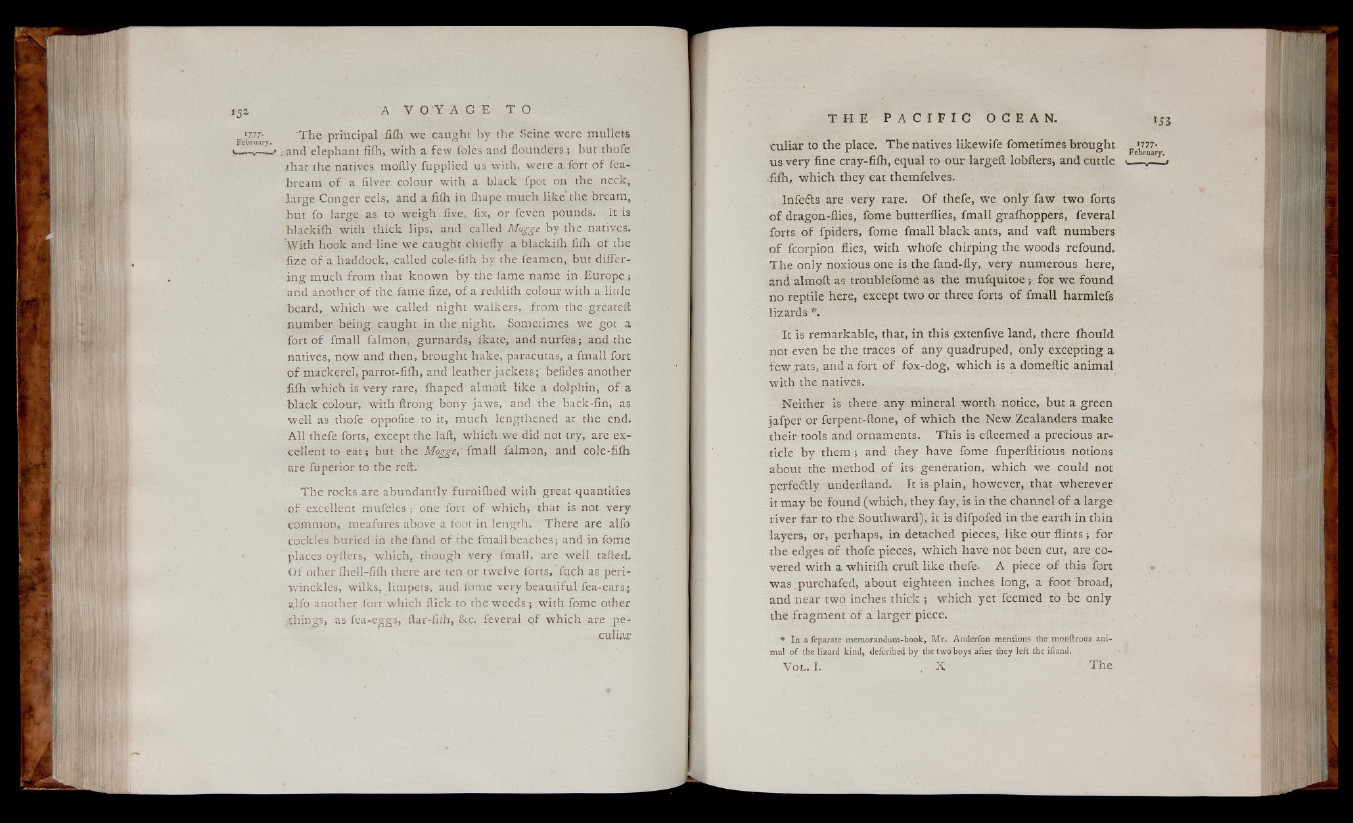
The principal filh we caught by the Seine were mullets
;.and elephant fifh, with a few foies and flounders ; but thofe
¿hat the natives moftly fupplied us with, were a fort of fea-
Jjream of a filver colour with a black fpot on the neck,
large Conger eels, and a flfli in fhape much like the bream,
but fo large as to weigh five, fix, or fevèn pounds. It is
blackifh with thick lips, and called Magge by the natives.
With hook and line we caught chiefly a blackilh fifh of the
fize of a haddock, -called cole-fiih by the feamen, but differing
much from that known by the fame name in Europe:
and another of the fame fize, of a reddiih colour with a little
beard, which we called night walkers, from the greateft
number being caught in the night. Sometimes we got a
fort of fmall falmon, gurnards, fkate, and nurfes; and the
natives, now and then, brought hake.'paracutas, a fmall fort
o f mackerel, parrot-filh, and leather jackets; befides another
fifh which is very rare, ihaped ài moil like a dolphin, of a
black colour, with ftrong bony jaws, and thè back-fin, as
well as thofe oppofite to it, much lengthened at the end.
All thefe forts, except the laft, which we did not try, are excellent
to eat ; but the Mogge,'fmall falmon, and cole-fifh
are fuperior to the reft.
The rocks are abundantly furnifhed with great quantities
•of excellent mufcles ; one fort of which, that is not very
common, meafures above a foot in length. There are alfo
cockles buried in the fand of the fmall beaches; and in fome
places oyfters, which, though very fmall, are well tailed.
Of other ihell-fifli there are ten or twelve forts, fuch as peri-
winckles, wilks, limpets, and fome very beautiful fea-ears;
alfo another fort which flick to the weeds ; with fome other
¡■.things, as fea-eggs, ftar-filh, &c. feveral of which are peculiar
to the place. The natives likewife fometimes brought
us very fine cray-fifh, equal to our largeft lobfters, and cuttle t_—. I
-fifh, which they eat themfelves.
Infeits are very rare. Of thefe, we only faw two forts
o f dragon-flies, fome butterflies, fmall grafhoppers, feveral
forts of fpiders, fome fmall black ants, and vail numbers
of fcorpion flies, with whofe chirping the woods refound.
The only noxious one is the fand-fly, very numerous here,
and almoft as troublefome as the m u fq u ito e fo r we found
no reptile here, except two or three forts of fmall harmlefs
lizards *.
It is remarkable, that, in this ¡extenfive land, there fhould
not even be the traces of any quadruped, only excepting a
few rats, and a fort of fox-dog, which is a domeftic animal
with the natives.
Neither is there any mineral worth notice, but a green
jafper or ferpent-ftone, of which the New Zealanders make
their tools and ornaments. This is efteemed a precious article
by them ; and they have fome fuperllitious notions
about the method of its generation, which we could not
perfectly underftand. It is plain, however, that wherever
it may be found (which, they fay, is in the channel of a large
river far to the Southward), it is difpofed in the earth in thin
layers, or, perhaps, in detached pieces, like our flints; for
the edges of thofe pieces, which have not been cut, are covered
with a whitiih cruft like thefe. A piece of this fort
was purchafed, about eighteen inches long, a foot broad,
and near two inches thick ; which yet feemed to be only
the fragment of a larger piece.
* In a feparate memorandum-book, Mr. Anderfori mentions the monftrous animal
of the lizard kind, defcribed by the two boys after they left the iiland.
V o l . I. , X The